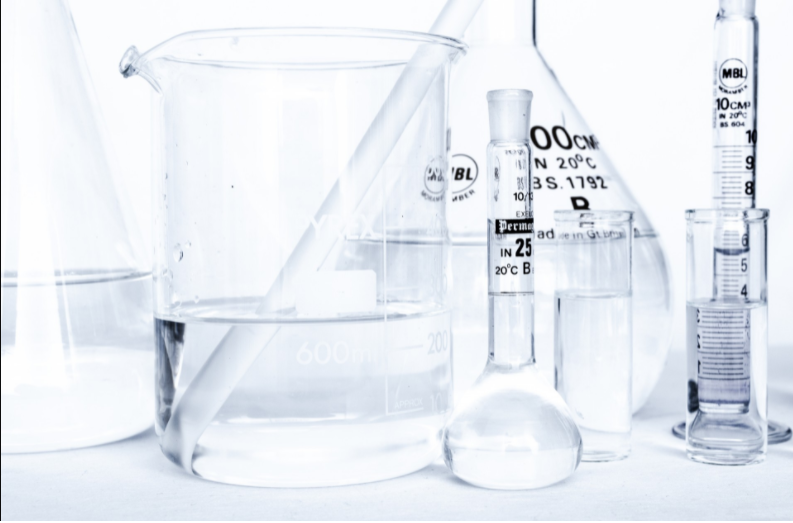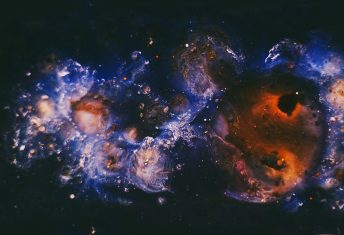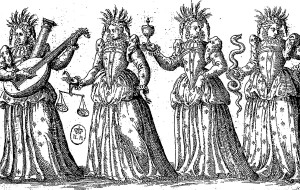
Chemistry has affectionately been called the Central Science. At its core is understanding to the very fabric of the Universe and Humans as the microcosm. In Psionic Chemistry understanding of the nature and laws of physical and non-physical realities are…
Chemistry has affectionately been called the Central Science. At its core is understanding to the very fabric of the Universe and Humans as the microcosm. In Psionic Chemistry understanding of the nature and laws of physical and non-physical realities are important to understanding life.
Last Update: July 19 2021
Introduction
In Psionics, we look at, explore, use and manipulate the concepts, Laws, and the elements of all of the Sciences. It is thought that the Creator invented the Sciences and Man has discovered them, much as a young boy plays with a stick and discovers the various uses of them and creates a name for the types of sticks and their uses. The function of Science, then is to allow Man a platform in which he can use, manage and play with the forces that they command, as every scientist commands their own armies of information.
Chemistry is the Supreme and Central Science that gives Man the power to blend together different elements to create compounds, substances, molecules, and from cells through to organisms. His experiments are governed by Empirical Law which forces the viewpoint that each result must be able to be duplicated whilst using the same components and procedures. Any anomalies are held as such anomalies and are not viewed as important except for if the flukes later evade chaos and become explainable.
We are all reminded of our earlier years playing with the Chemistry sets that we received for Christmas. The components that we explored such as the Bunsen burner, test tubes, flasks and the wonderful array of chemicals were our tools to learn how nature forms new things and destroys or modified the old.
In this little article we will briefly introduce some of the elements of Psionics that will be address further in the Psionic Circle Chemistry Course. The Study of Psionic Chemistry, offer you another level of understanding of life. This level represents the astral and emotional level of Psionics life in addition to the physical. The areas that we will include in the Course are the following and in order:
In this Article
1 Stoichiometric relationships
2 Atomic structure
Exclusive to the Course
3 The periodic table
4 Chemical bonding and structure
5 Energetics/thermochemistry
6 Chemical kinetics
7 Equilibrium
8 Acids and bases
9 Redox processes
10 Measurement and data processing
If you have taken the Aura Course, you will be able to not only use your physical sight, but also include your energetic sensory as well. We strongly suggest the use of any “accurate” perception. Always include this information in your Psionic Circle Journal. We invite all to use the diary, member or not. It is always nice to be able to review your progress on the Path of Life and evolutionary journey. We are all Probationers on the Path, until we decide to accelerate our growth. We hope that you will enjoy this article and will tell all of those whom you trust.
With that we will begin.
What is Chemistry (Colloquial)
We will first begin with an understanding of the term Chemistry. We believe most people know the colloquial use of the term meaning when they refer to two people “having good chemistry”. What they are saying that when the two people get together, they look and feel as though they belong together. An example is the similarities in behavior which includes: their use of the same words, closeness in proximity, where you see one the other is never far away, if not literally, but energetically, and the close resemblance of the two. Where there is good chemistry it manifests in the man feeling balanced, settled-in, and content. In a woman, this may be seen as composed, confident, and wise. Thus, to have good chemistry, between people, means that the couple are well matched and belong together, as though they have been graced by some higher force. Everything they do seem to resonate with a sort of chemistry and balance. Chemistry is truly the key to survival.
The opposite is true if a couple is said “not to have good chemistry”. And you probably can imagine what that might be like. Maybe that is your current situation. We hope not, for the former is much better, not only for you but for everyone.
You see, having good chemistry is a blessing not only for the partners, but for everyone who comes in contact with the person, and by extension for the world at large. Therefore, finding the right partner is not just good for the individual, but great for everyone. This brings us to the first Law that we will talk about. It is the Law of Self-Sovereign.
The Law of Self-Sovereign
The Law of Self-Sovereign is a long a lost principle that states that the individual always possess the rights and power of self government. This law and principle might have roots in Jewish laws where humanity at birth was given free will and was considered wicked, if the man was lazy and didn’t exert their “choice of self-sovereignty”. Failure of exerting this right, meant that someone else would have to be “responsible” for the person, their family, and their things. It meant that the person had chosen to be juvenile in their duty as a human.
Failure to be responsible means that members of the family, government, and or special interests groups would need to step in and govern the person, violating the person’s Soul principles and rights. The price of this neglect of duty is beyond comprehensible. It is expensive in financial costs, in efficiency of human capital, personality, and means loss on all levels. No one who is forced to look after another due to a “series of mistakes” tends to treat that person fairly and micro-govern those who do not want to look after themselves or their responsibilities. Examples of this is seen in a health care system that is very expensive, social welfare that pays very little, and nursing where you see examples of coldness and hard-hardheartedness over time. It violates a “natural order of life” to be forced to look after others who can and should manage themselves. It doesn’t matter if this assistance is paid by taxes or private interest groups.
But we regress, let us move on from the Law of Self-Sovereignty back to the topic of Chemistry.
Chemistry Defined
So, chemistry between to individuals is generally visible and it represents correctly bonding with a person that fits the individual. Let’s move on from human chemistry (meta-micro) to the chemistry of atoms and molecules. (micro) We start with our working definition of Chemistry.
chemistry
/ˈkɛmɪstri/
noun
- the complex emotional or psychological interaction between people.
2. the branch of science concerned with the substances of which matter is composed, the investigation of their properties and reactions, and the use of such reactions to form new substances.
So, in definition one we see our relationship definition and but the definition that we are concerned with now is the second… it is the science that is concerned with the composition of matter and its transformations. Psionics is concerned with the what, how, and why of these transformation. We hope to peel back the veil and see what is occurring at each phase of the chemical reactions. We first observe with our physical sensory apparatus and then with our extrasensory apparatus.
Why would we want to observe with the extrasensory perception??? We will let you ponder this for a time and will provide the answer a little later in this article.
Let us now start at the beginning with the states of matter and Stoichiometric Relationships, and then proceed through various principles of chemistry. For you that are reading this as part of the course the themes progress through and then end with Redox or Reduction-Oxidation Reactions.
Remember that is merely an introduction to the subject of Psionic Chemistry. If you are interested in further study, we will provide you with a link for the course when it is available.
Section 1 Stoichiometric Relationships
Introduction
In the Beginning, the Creator created the earth and it was void without form and empty. And darkness was over the surface of the deep, and the Spirit of God was hovering over the waters. And the Creator said, “Let there be light,” and there was light. Genesis Chapter 1
For those who are unfamiliar with Psionic Chemistry, this is a good place to start. Beginning with one substance, and then with the addition of another substance the creation of light as the resultant. In this particular reaction the Creator used a solid, combined it with spirit and water and somehow he generated the outcome of light. So, we have the three states of matter, those being solid, liquid, and gaseous.
Their difference in terms of the arrangement and movement of particles (due to the states) make up substance that may be individual atoms, molecules, or ions. The difference in atoms, molecules or ions states will exhibit different characteristics and properties. The characteristics and properties manifest as size, shapes, speed of movement, energy and forces of attraction. From a Psionics standpoint this is very interesting and important. Because then we learn how to encourage things to change, as long as we do not violate personal rights of the elements or cause physical, mental, emotional, or spiritual harm in others. More on this in ethics, also taught in Psionic Circles.
Every relationship that is allowed to be modified, must have the perfect amount of substances for complete transformation. If there is not enough substance, then the reaction may not take place. But that is not all that is required.
Not only are the right substances necessary in the right proportions, but they must be at the right temperature, in the right form, and the reaction must take place in the correct location. So, you see for even the simplest procedures all of the elements of the reaction must be applied and controlled.
Stoichiometry Defined
Thus, in Stoichiometric Relationships there must be the correct calculation of reactants and products to produce a chemical reaction. Before we identify and outline some of the rules of stoichiometry let us first clearly define the term.
stoichiometry
/ˌstɔɪkiˈɒmɪtri/
noun
1.a branch of chemistry that deals with the application of the laws of definite proportions and of the conservation of mass and energy to chemical activity
- the quantitative relationship between constituents in a chemical substance
- the quantitative relationship between two or more substances especially in processes involving physical or chemical change.
- is the calculation of reactants and products in chemical reactions in chemistry.
So based upon our definition we learn that stoichiometry is the application of laws of definite proportion. We incorporate the fact that in every reaction mass is always conserved — Newton’s Law of Thermodynamics – that is, it cannot be created or destroyed — within an isolated system. And the Laws of the conversation of mass and energy which has been modified by Einstein confirming the total mass and energy in a system remain constant.
So, it holds true that in a reaction mass and energy are always balanced with specific laws. These govern how a reaction is likely to react in a given set of conditions. The root takeaway is that “everything is govern by rules”. And in Psionics we learn about these rules and how they apply to the human being. This understanding is the core of manifestation… as manifestation is the creation of the desired affect or something else.
Stoichiometry in Action
Moving back to practical stoichiometry, a chemical reaction example of stoichiometry in action is the creation of a molecule of water. In this reaction Nature has combined Hydrogen to Oxygen to create the water. But according to the Laws of conservation of energy and mass and the law of definition proportions and constant composition means that the reaction must take place in the right location, at the right time, with the correct constituents in fixed ratios.
Therefore, in order to make water you must have 2 atom of Hydrogen and combine it with 1 atoms of Oxygen in order to get the water. And thus, the formula 2H + O -> H2O.
More on this in the Course.
Let us move on then to Section 2 Atomic structure and peer into an atom.
Section 2 Atomic Structure
In nature there are approximately 92 naturally occurring elements, plus those that have been made artificially in nuclear reactions. There may be others that occur naturally, but they are out of our reach. So, the atom is the basic building block of all matter. Each atom or combination is very different from any other in composition, characteristic, and properties.
They make up our physical universe and they possess different states which form a multitude of combinations that are natural and unnatural.
The one thing that all of the atoms have in common is their core constituents. There are three different types of subatomic particles: the electron, proton, and the neutron. The subatomic particles are found in different locations within the atom and have different characteristics and properties. There are 2 primary atomic location where these particles are found. The orbitals and the nucleus. The orbital is a relative location of the electron. Orbitals are actually bands of energy that contain specific energy that are held in specific energy shells. They tend to be found in the outer portion of the atom. The second location is the nucleus. It is found in the center of the atom and there is located the proton and the neutron.
Atoms are governed by properties such as number, mass and charge. The number of the atom tells much information about the atom. It reveals identity of the element of the atom. The number also indicates the number of electrons located in all of the atomic shells. Finally, it tells the number of neutrons in the nucleus of the atom. The number of the protons never change in the atom; however, the number of electrons and neutrons may vary. Their variance cause polarity in the atom, isotopes, and the bonding between other atoms or molecules.
In addition to number, each of the subatomic particles are characterized by mass. The electron has virtually no mass and is 9.10938356 × 10-31 kilograms. The proton has a mass of 1.67262 × 10−27 kg, which as you can see is very small. The neutron has a mass of slightly larger of 1.67493 × 10−27 kg.
The particles of the atom have innate within them a charge. The protons of the atoms are always positive. The electrons are always negative. And neutrons are always charge less. It is negative 1 for the electron and positive 1 for the proton. The neutron doesn’t have a charge.
The reason for the differences is found in the Periodic Table of Elements which is in the Chemistry Course. We hope that this has assisted you in learning the basics of Chemistry. In Psionics we use this information to create change in ourselves and in the environment. We hope that you have enjoyed this little introductory article and wish you continued success.
Thank you for Reading!
Posted by admin
Over the years, I have had the opportunity to develop my studies into skills. I have practiced Tarot for 20 years along with Astrology, Numerology, Runes, Spiritual Healing, Hebrew Mysticism, Theosophy, Chinese Medicine and Ancient Philosophy. I use all of these skills along with my background in Business, Counselling and Intuition to get to the stem root of every problem and to come up with creative Answers to heal the person from the Inside Out, and Outside In.
Related Posts
Search Here
Psionic Quote of the Day
“In Psionics, if you look at what you have in life, you’ll always grow more. If you look at what you don’t have in life, you’ll always see Red.” -Psion Winfrey















